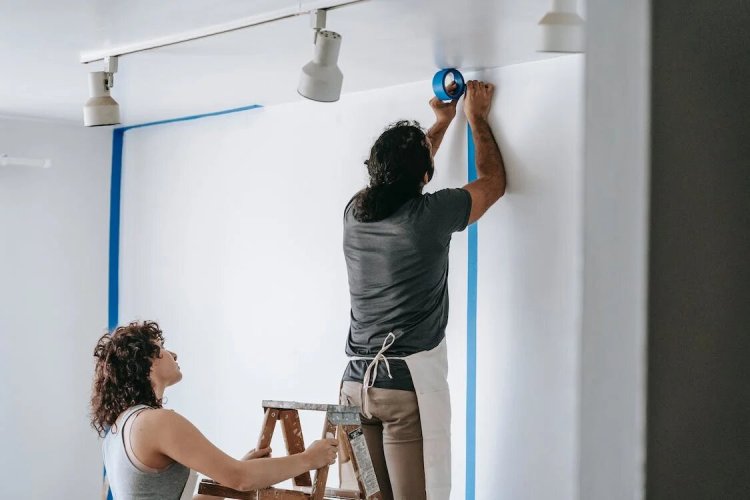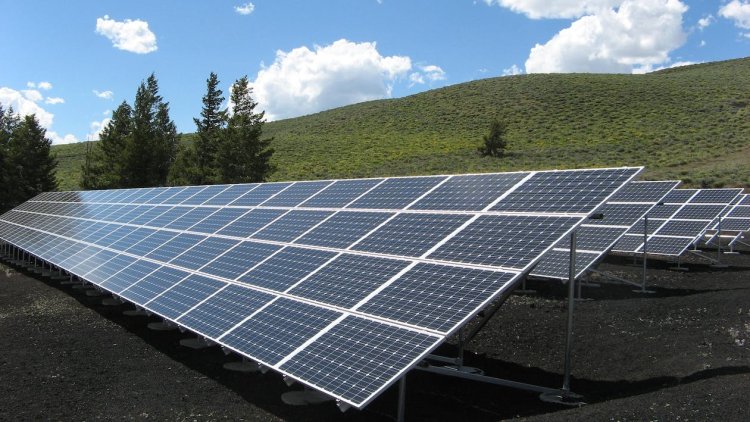Energy-efficient Home Improvement Tips
Revitalize your space with eco-conscious home improvements. Discover energy-saving secrets for a greener, smarter lifestyle.

In today's world, where environmental sustainability is paramount and energy costs continue to rise, making your home more energy-efficient is not just a smart choice; it's a responsible one. By implementing some practical and cost-effective changes, you can reduce your energy consumption, lower your utility bills, and contribute to a healthier planet. In this blog, we will explore a comprehensive guide to energy-efficient home improvement tips, allowing you to transform your residence into an eco-friendly haven while enjoying the financial benefits of reduced energy bills.
Assess Your Home's Energy Usage
Before diving into any home improvement project, it's essential to understand how your home consumes energy. Conducting a comprehensive energy audit can help identify areas where improvements are needed. An energy audit typically includes:
- Checking for air leaks: Identify and seal gaps around doors, windows, and any other potential leakage points.
- Inspecting insulation: Ensure that your home is adequately insulated to prevent heat loss in the winter and heat gain in the summer.
- Evaluating appliances and lighting: Consider replacing outdated appliances with energy-efficient models and switching to LED lighting.

By identifying and addressing areas of energy waste, you can make informed decisions about where to focus your home improvement efforts.
Improve Insulation and Sealing
One of the most significant contributors to energy loss in homes is inadequate insulation and poor sealing. Insulation not only keeps your home more comfortable year-round but also reduces the strain on your heating and cooling systems. Here's how to tackle insulation and sealing effectively:
- Attic Insulation: Proper attic insulation can prevent heat from escaping during the winter and keep your home cooler during the summer. Consider adding more insulation if your attic is under-insulated.
- Wall and Floor Insulation: Insulate exterior walls and floors with materials like fiberglass, foam board, or spray foam insulation. Ensure that gaps and seams are sealed effectively to prevent air infiltration.
- Weatherstripping and Caulking: Seal gaps around doors and windows with weatherstripping and use caulk to seal cracks in walls and foundations. A well-sealed home is more energy-efficient.

Upgrade Lighting and Appliances
A significant portion of your home's energy consumption comes from lighting and appliances. Upgrading to more energy-efficient options can result in substantial energy savings. Here are some strategies:
- LED Lighting: Swap out your old incandescent bulbs for energy-efficient LEDs, which use far less electricity and have a much longer lifespan.
- Energy Star Appliances: When it's time to replace appliances such as refrigerators, washing machines, and dishwashers, opt for Energy Star-rated models. These appliances meet strict energy efficiency standards and can reduce your energy consumption.
Invest in Energy-Efficient Windows and Doors
Windows and doors are another source of energy loss in a home. Investing in energy-efficient options can improve your home's insulation and comfort. Consider the following:
- Double-Pane Windows: Double-pane windows provide better insulation than single-pane windows and reduce heat transfer. They can also help with noise reduction.
- Energy-Efficient Doors: Energy-efficient doors are designed to prevent drafts and heat loss. Look for doors with weatherstripping and energy-efficient cores.
Optimize Heating and Cooling Systems
Heating and cooling systems are among the biggest consumers of energy in a home. Optimizing these systems can lead to substantial energy savings. Here's what you can do:
- Programmable Thermostats: Install programmable thermostats that allow you to set temperatures for different times of the day. This prevents your system from running unnecessarily.
- Routine Care: Plan for yearly maintenance of your heating and cooling systems. Clean filters, check for leaks, and ensure they run efficiently.
- Smart Heating Options: Consider investing in a smart thermostat that can learn your habits and optimize heating and cooling based on your preferences.
Utilize Renewable Energy Sources
For those looking to take their energy efficiency efforts to the next level, consider harnessing renewable energy sources for your home. This not only reduces your reliance on traditional power sources but also contributes to a more sustainable future. Options include:
- Solar Panels: Install solar panels on your roof to generate clean electricity from the sun. Many areas offer incentives and rebates to make this option more affordable.
- Wind Turbines: In regions with sufficient wind, small wind turbines can generate electricity for your home. These can be especially effective for rural properties.
- Geothermal Systems: Geothermal heat pumps use the constant temperature of the earth to heat and cool your home efficiently. While installation can be more expensive, the long-term energy savings can be significant.

Conclusion
Transforming your home into an energy-efficient haven is not only good for your wallet but also for the planet. By implementing these energy-efficient home improvement tips, you can lower your energy bills, reduce your carbon footprint, and enjoy a more comfortable living space. Start your journey towards a greener and more cost-effective future today. Your home will thank you, and so will the environment.
 drseervi
drseervi 















